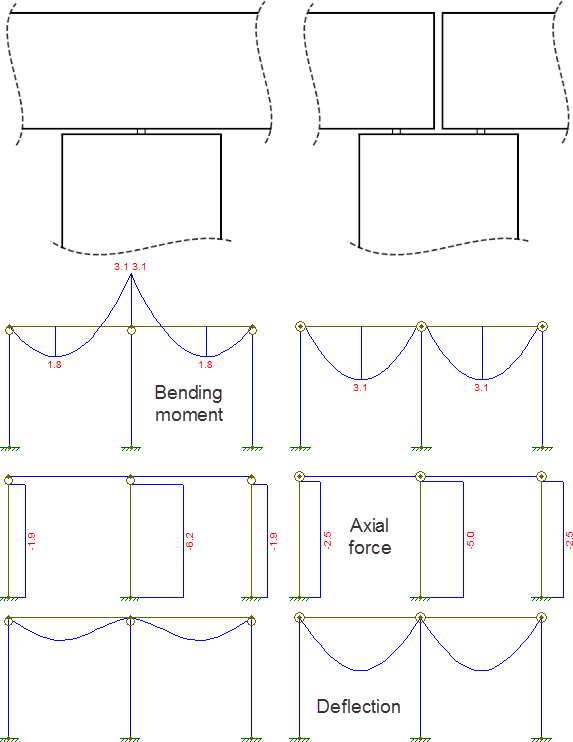For a simple visual demonstration, take one of the spans in your example.
If it is fully hinged, then each span can be represented as a simply-supported beam. If the beam is continuous, then each span can be represented as fixed-and-pinned (or at least pinned and partially fixed).

The only difference between these two models is the moment reaction at the fixed support. Therefore, we can replace the fixed support with a pinned one and a concentrated bending moment.

This bending moment reaction is what causes the reduction of deflection in a continuous beam. It causes an uplift of the beam which counters some of the deflection due to the ordinary load.

Now, if you want a more numeric explanation, look no further than the fact that a beam's bending moment is equal to the second derivative of its deflection. The negative bending moment caused by the beam's continuity therefore implies in a reduction of the beam's curvature and therefore, a reduction of its maximum deflection.
All diagrams obtained via Ftool, a free 2D frame analysis tool.



